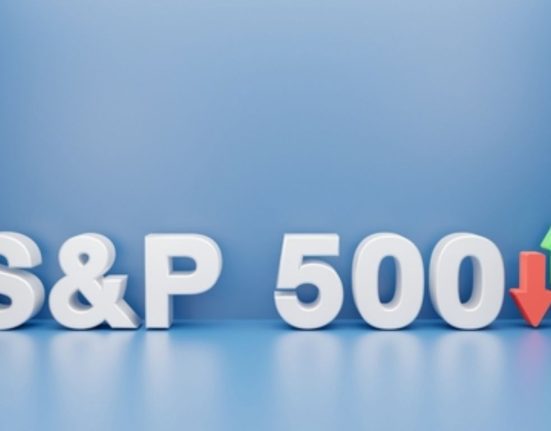The S&P/ASX 200 VIX, a key indicator of market sentiment, has recently shown signs of decreasing implied volatility in the Australian equities market. The VIX, often referred to as the “Fear Gauge,” measures investors’ expectations for price fluctuations over the next 30 days. A decline of 4.87% to 10.88 in the S&P/ASX 200 VIX suggests that market participants are becoming more optimistic and confident, expecting a relatively stable market in the near term. This article delves into the implications of this decline and explores the factors contributing to the current state of market sentiment.
Decline in Implied Volatility Signals Market Stability
The S&P/ASX 200 VIX’s recent decline to 10.88 marks a significant drop of 4.87%, indicating that investors are anticipating lower levels of market uncertainty. Implied volatility is a measure of the expected magnitude of price swings in the underlying S&P/ASX 200 index options. A higher VIX value typically reflects greater market uncertainty, while a lower value signifies increased market confidence and stability. The current reading of 10.88 suggests that investors expect relatively mild price fluctuations in the Australian equities market over the next month.
Market Optimism Amidst Positive Economic Indicators
The decline in the S&P/ASX 200 VIX may be attributed to various positive economic indicators. For instance, the recent robust performance of key sectors in the Australian economy, such as manufacturing, technology, and healthcare, has contributed to the overall optimism among investors. Additionally, low inflation rates and stable interest rates have bolstered confidence in the market. The combination of these factors has led investors to perceive reduced downside risk, thus pushing the VIX lower.
Impact of Global Economic Recovery
The global economic recovery from the COVID-19 pandemic has had a substantial impact on the Australian equities market. As major economies, including the United States, China, and the European Union, continue to show signs of recovery, international investors have gained confidence in the stability of the global financial system. This increased confidence has spilled over into the Australian market, drawing foreign investment and driving down implied volatility. As a result, the S&P/ASX 200 VIX has reflected a sense of stability and positive sentiment among both domestic and international investors.
Government Fiscal Policies and Central Bank Support
Government fiscal policies and central bank support have played a crucial role in maintaining economic stability and investor confidence. The Australian government’s initiatives, such as infrastructure spending and stimulus packages, have stimulated economic growth and mitigated the impact of the pandemic on businesses and individuals. Moreover, the Reserve Bank of Australia’s accommodative monetary policies, including historically low interest rates, have incentivized investment in the equity market. These measures have further contributed to the decline in implied volatility, as investors perceive a lower risk of major market disruptions.
The Role of Earnings Reports
Earnings reports from major companies listed on the S&P/ASX 200 index have also influenced the VIX’s decline. Favorable corporate earnings, beating market expectations, have provided evidence of strong business performance, enhancing investor confidence in the equity market. Positive earnings reports often lead to bullish market sentiments, potentially driving stock prices higher and reducing implied volatility levels.
Investor Sentiment and Options Trading
Investor sentiment plays a vital role in determining the VIX’s movements. As the market becomes more optimistic, traders may adjust their options strategies, leading to lower demand for protective options contracts. When traders expect milder price swings, they are less likely to hedge their positions using options, resulting in decreased implied volatility. This change in options trading behavior, along with overall investor sentiment, can influence the VIX’s movements.
Conclusion
The recent decline of 4.87% to 10.88 in the S&P/ASX 200 VIX indicates that investors are increasingly confident and anticipate a period of relative market stability. Positive economic indicators, global economic recovery, government fiscal policies, and central bank support have collectively contributed to the decline in implied volatility. Additionally, strong corporate earnings reports have further boosted investor confidence. As the market sentiment remains optimistic, investors should stay vigilant and keep an eye on potential shifts in the economic landscape that could impact the S&P/ASX 200 VIX and overall market volatility.










